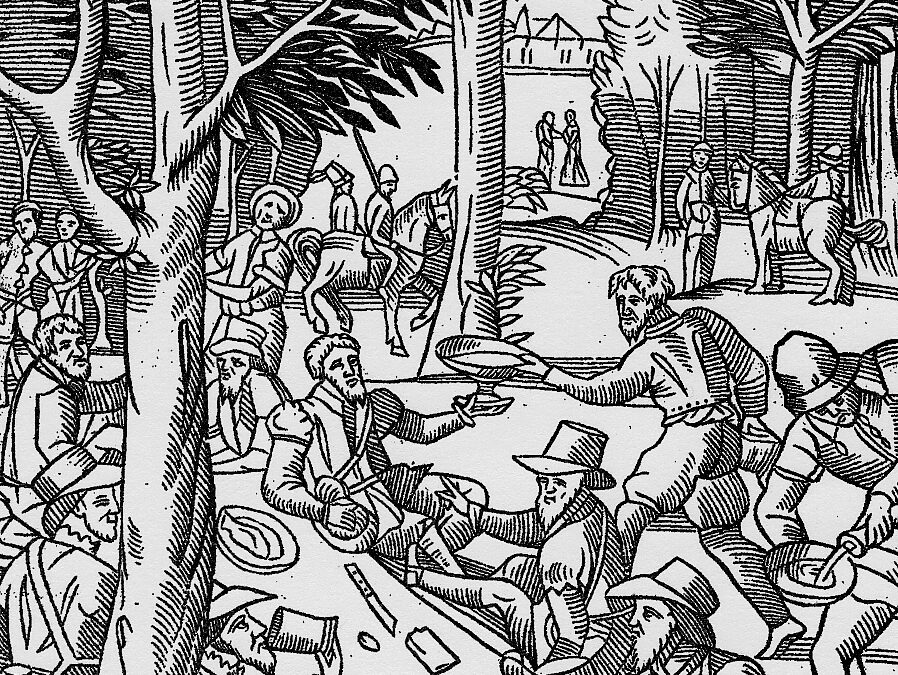 Fouilloux’s La Venerie, aka Hunting, differs from Gaston’s 1389 description (See Le livre de chasse). Accordingly, the assemblée is replaced with un repas chasse, a hunters’ lunch attended only by men. However, when George Gascoigne adapted La...
Fouilloux’s La Venerie, aka Hunting, differs from Gaston’s 1389 description (See Le livre de chasse). Accordingly, the assemblée is replaced with un repas chasse, a hunters’ lunch attended only by men. However, when George Gascoigne adapted La...
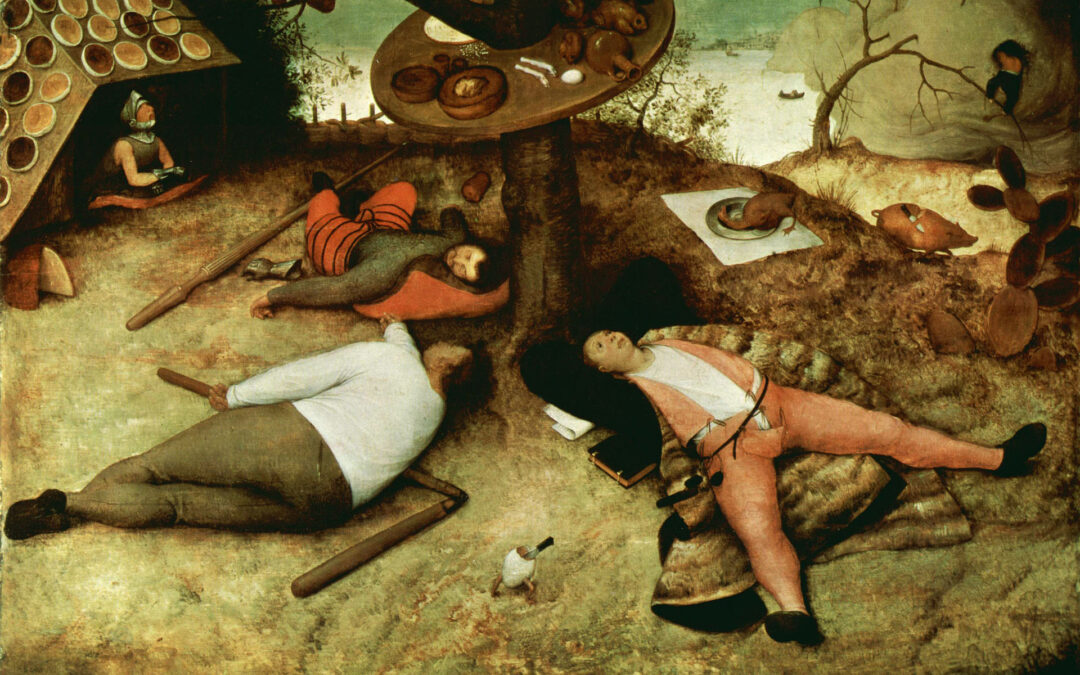 Bruegel the Elder’s The Land of Cockaigne, aka Het Luilekkerland, makes you think it’s a picnic. Not. It’s a satirical look at Cockaigne, a mythical place where it’s always spring and never winter, in which life is all play and no work,...
Bruegel the Elder’s The Land of Cockaigne, aka Het Luilekkerland, makes you think it’s a picnic. Not. It’s a satirical look at Cockaigne, a mythical place where it’s always spring and never winter, in which life is all play and no work,...
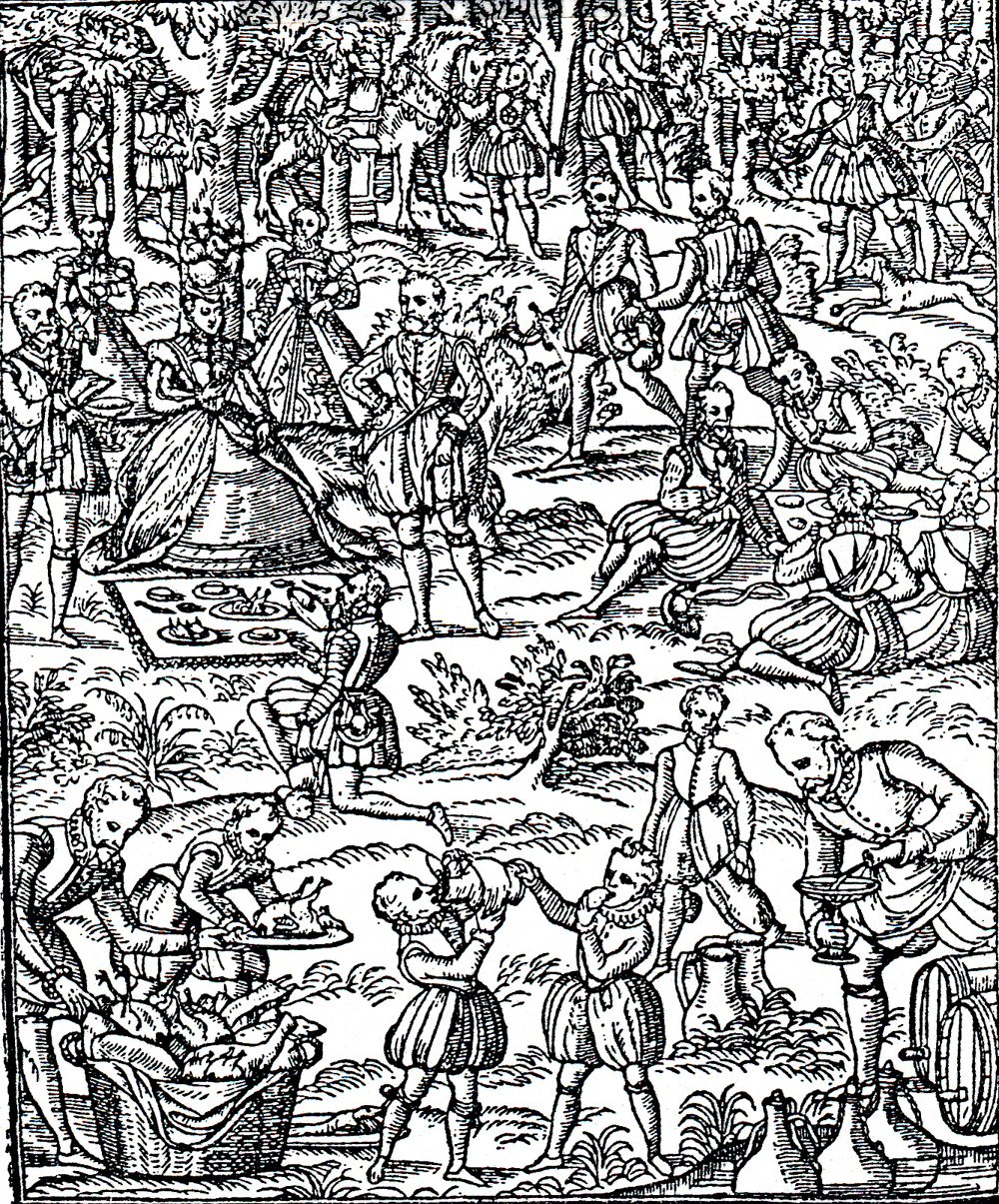 Gascoigne adapted Gaston Phébus’s The Book of the Hunt (1380) and Jacques du Fouilloux’s in La Venerie (1560) into English, retitling the work The Noble Arte of Venerie or Hunting (1575). (The book is dedicated to Lord Clinton, Elizabeth’s master of...
Gascoigne adapted Gaston Phébus’s The Book of the Hunt (1380) and Jacques du Fouilloux’s in La Venerie (1560) into English, retitling the work The Noble Arte of Venerie or Hunting (1575). (The book is dedicated to Lord Clinton, Elizabeth’s master of...
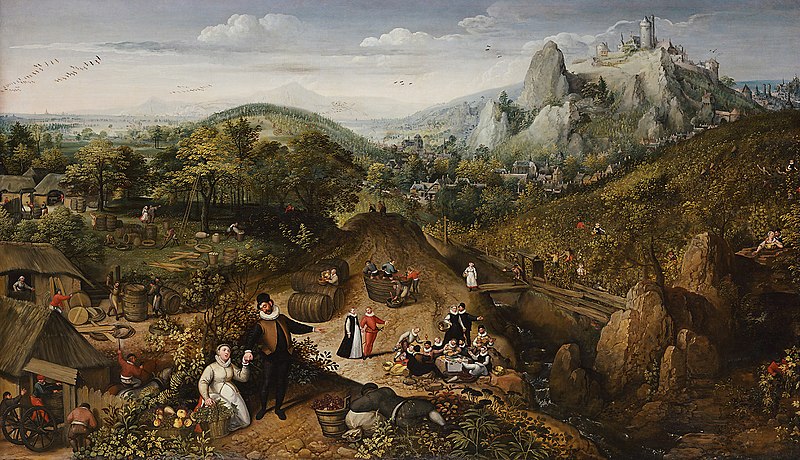 Valckenborch must have loved dining, food, and wine. His paintings are filled with depictions of meats, fish, and fruits, so he might be called a painter of feasting. His calendar paintings, such as the one celebrating October’s bountiful grape harvest, include an...
Valckenborch must have loved dining, food, and wine. His paintings are filled with depictions of meats, fish, and fruits, so he might be called a painter of feasting. His calendar paintings, such as the one celebrating October’s bountiful grape harvest, include an...
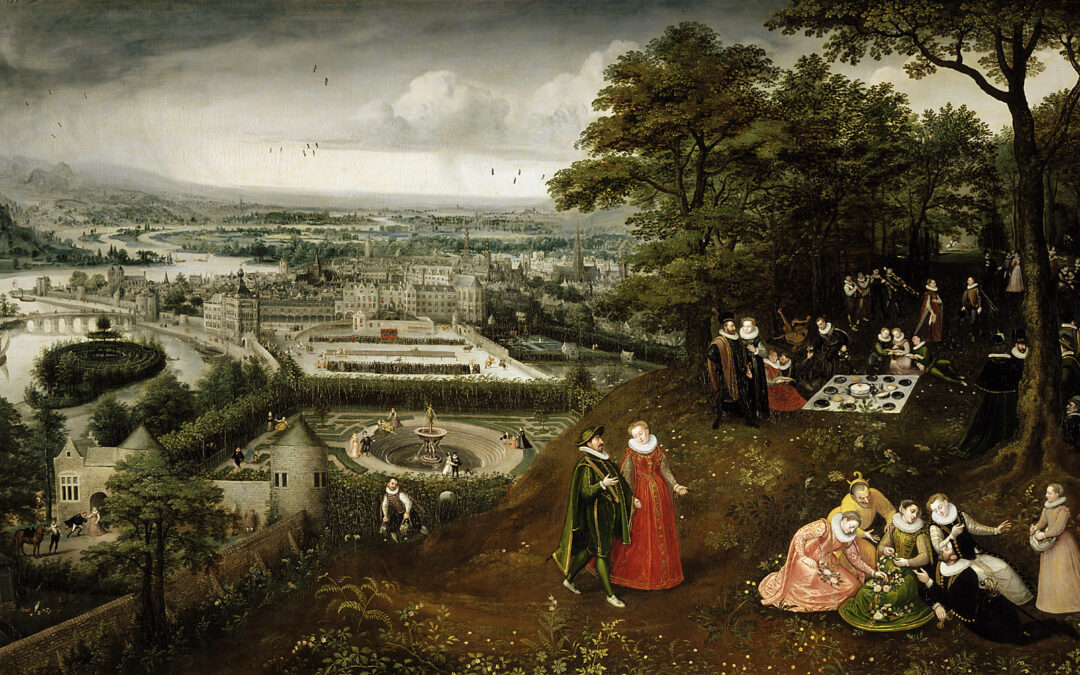 Valckenborch’s Spring, aka Frühlingslandschaft (Mai), depicts the new season arousing a desire for revelry after winter’s confinement. It’s part of a series of calendar paintings celebrating the months of the year and appropriate seasonal activities. Though, in this...
Valckenborch’s Spring, aka Frühlingslandschaft (Mai), depicts the new season arousing a desire for revelry after winter’s confinement. It’s part of a series of calendar paintings celebrating the months of the year and appropriate seasonal activities. Though, in this...
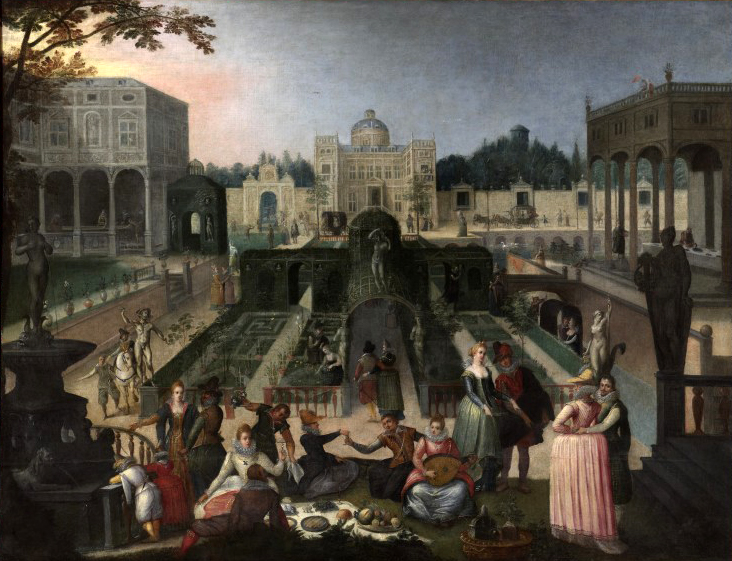 Feast In The Park Of The Duke Of Mantua or Fête dans le Jardin du Duc de Mantoue is picnicky but not a feast. The curators of the Musée des Beaux-Arts probably assign the title. It is a garden of lovers dining alfresco in an imaginary architectural setting. The...
Feast In The Park Of The Duke Of Mantua or Fête dans le Jardin du Duc de Mantoue is picnicky but not a feast. The curators of the Musée des Beaux-Arts probably assign the title. It is a garden of lovers dining alfresco in an imaginary architectural setting. The...
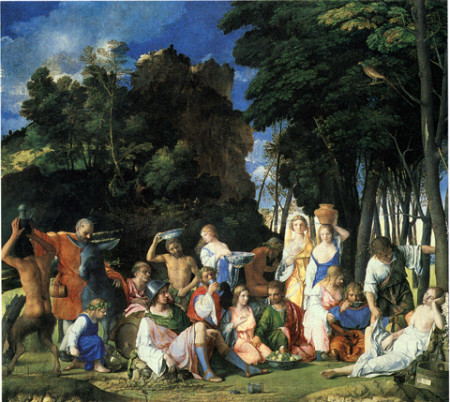 Inspired by Giovanni Bellini’s The Feast of the Gods, Lorenza De’ Medici created this menu forth Artist’s Table (1995). De Medici promises foods are full of the flavor of the Renaissance. But it’s difficult to imagine Bellini or his patrons...
Inspired by Giovanni Bellini’s The Feast of the Gods, Lorenza De’ Medici created this menu forth Artist’s Table (1995). De Medici promises foods are full of the flavor of the Renaissance. But it’s difficult to imagine Bellini or his patrons...








